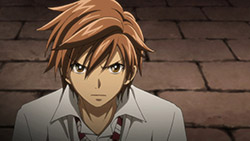 |
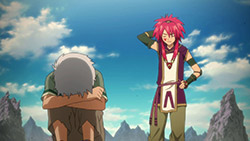 |
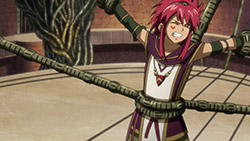 |
 |
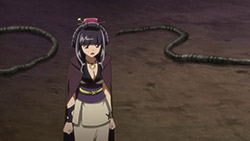 |
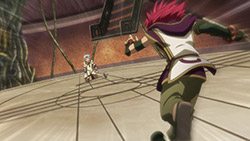 |
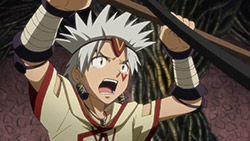 |
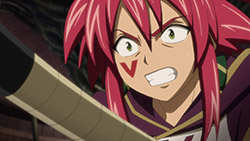 |
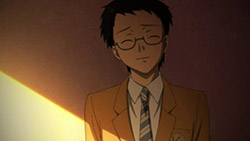 |
 |
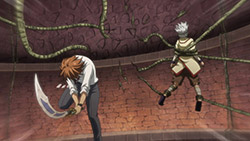 |
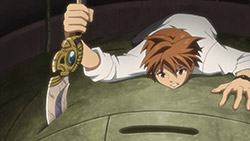 |
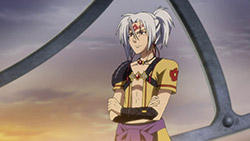 |
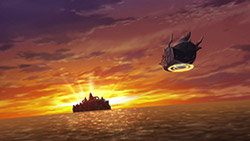 |
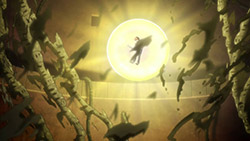 |
 |
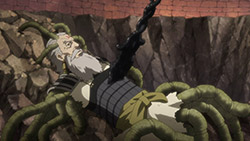 |
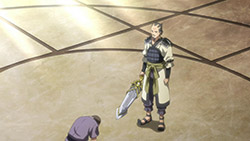 |
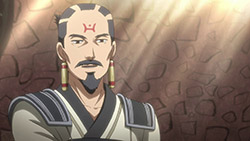 |
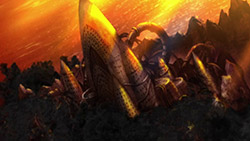 |
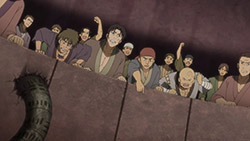 |
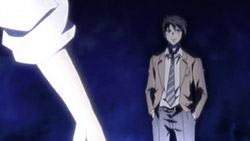 |
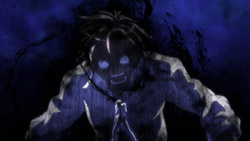 |
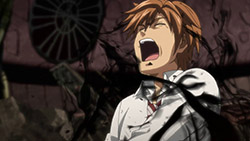 |
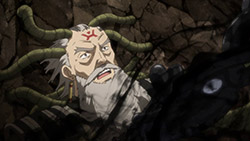 |
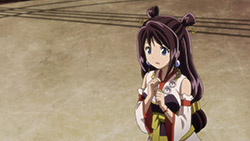 |
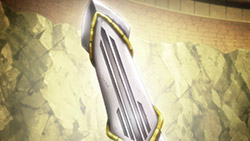 |
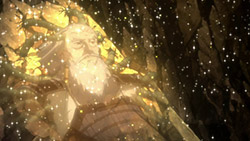 |
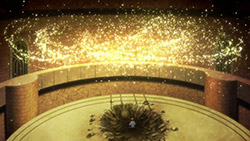 |
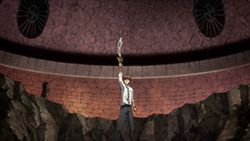 |
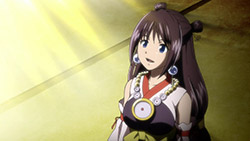 |
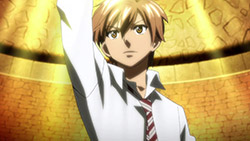 |
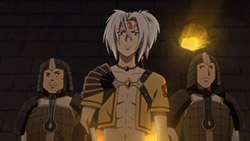 |
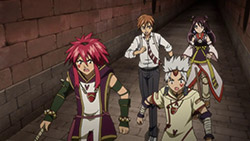 |
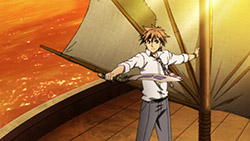 |
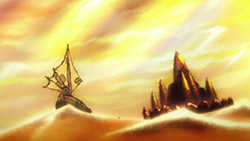 |
「覚醒」 (Kakusei)
“Awakening”
I see a lot of hopeful signs for Arata Kangatari, but the road ahead is still a puzzling one.
The basic trend continues unabated – Arata Kangatari is being adapted at the rate of about 4 chapters per episode, and there are no signs that entire major plot elements will be axed (not yet, anyway). Rather than Zetman, perhaps the model for where this adaptation is going might be Deadman Wonderland (a series with which Arata shares a few similar themes) – a taste of what the manga has to offer, but no attempt to bring anything to a real conclusion.
I’m obviously torn here, because I actually like the way Yasuda Kenji is proceeding with this adaptation. Arata Kangatari the anime isn’t flashy and doesn’t blow you away right out of the gate, but I find it has a nice slow build quality. Not only has each episode been better than the one before, but I’ve found in all four instances the second act of the episode has been significantly better than the first. And Yasuda is managing to introduce a good number of the important story elements of the manga in every episode without making them feel insanely paced.
Once again this week, we didn’t get any time with the Arata in real-world Tokyo, but once again there was more than enough happening in Amawakuni to make up for it. There, Arata (for simplicity’s sake I’ll refer to Hinohara that way in eps where his double doesn’t appear – three less keys to hit) is dealing with the aftermath of Kanate and Ginchi being taken in The Reckoning. This ep represents an important step for Arata’s development as a main character, because up to this point he’s been basically in the self-pity stage. What the manga does a better job of communicating (given more time to do so) than the anime is how being beaten-down by bullying has effectively made Arata believe all the things the bullies have said about him – his self-worth is basically zero. In Arata’s mind, no one is less deserving of another person’s trust than he is.
I think Okamoto Nobuhiko is doing a very nice job with Arata, and I’m someone who was a bit skeptical that he was the right fit. Playing agains type, Okamoto is projecting considerably more vulnerability than we’re used to, and doing well with a character who’s basically a quiet and shy kid – though as the episode progresses we do get a reminder that he can scream as well as any seiyuu out there. The role of Kanata and Ginchi in Arata’s self-rehabilitation is critical here, as it shows Arata that people – even boys his own age or younger – are capable of real loyalty to each other, even under the weight of impending death. This seems to inspire Arata and give him the strength and self-belief to take on Tsutuga, the Sho and warden of Gotoya, whose body has become fused with a Hayagami that his rage after a betrayal of his own has turned into demonic form.
It’s nice to see Arata step up and take the hero’s role, and I think it plays out pretty believably. What we see here is very important – a Kamui "submit" to another. Rather than exact revenge, Arata sees the pain in Tsutuga that turned into what he is ("there but for the grace…" he thinks) and decides to save him – and in doing so reconnects Tsutuga with the man he was. His Kamui is Saniwa, the Hayagami of justice, and he willingly turns it over to Arata – in doing so subverting his Kamui to the will of Arata’s. Tsutuga later informs the just-arrived Kannagi that Arata’s Hayami is the "Sword of Origins" – which seems to hit Kannagi rather hard.
The nature of the story has been laid out quite clearly and understandably in these four episodes, and they’ve done a pretty solid job of establishing the main cast as well. There isn’t a tremendous amount of subtlety – I think this is true of the source material as well – but as a straight-ahead shounen fantasy with elements of darker psychological themes, Arata Kangatari is a compelling premise. And so far it’s being executed well – better, frankly, than I feared it would once the scheduling became clear. I think new viewers have been brought into the story effectively, and all any manga-reader can do is stay the course and hope for the best.
Preview
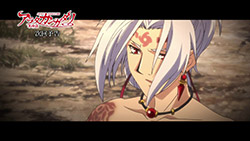 |
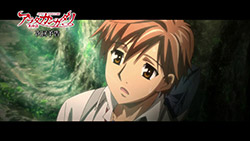 |
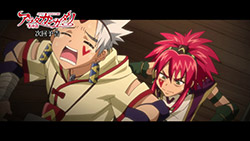 |

I quite the enjoy the development between Arata and the Warden but I kinda wanna know what happened to the “other” Arata. Will he fix the school life for him?
Stay tuned. That’s the B-plot but it does get some play.
This series is feeling rushed a bit. Sure, the important action scenes are being hit, but there isn’t a good sense of “time is passing” going on here.
The Legend of Arata:Hayagami Waker
I think a couple of slice of life type moments was skipped, but at least the anime isn’t as slow paced as the beginning of the manga seemed.
I just hope they don’t skip too many of those moments because that’s not cool ;(.
This really might have a Deadman Wonderland theme. A case of knowing where you want to stop and doing whatever the heck it takes to make it to that point with the episodes you have to work with. Will probably be left thinking “god I want sequels for both.”
I do feel like they are doing a fine job. I just hope at the end of the day this is a test run to see if there is enough interest and if so to give it a more smoothly paced sequel down the road.
For now I’m enjoying it. Arata is a good guy, just someone really beaten down by his experiences. Even without seeing the whole story you knew this was a guy who stopped going to school for a while it was so bad. But in the end he doesn’t want to be someone who betrays those that trust him.
Looks like a gay show because no girls take role in it. All girls are expendable.
Oh, yeah! Only K-on, only hardcore!
Because in your eyes all male cast = GAY <<
I get such a weird nostalgia blast watching this show. Especially the OP. It’s so old school.
i really hope the future episodes develops the plot better. promising start, and now it’s starting to become predictable. so he basically goes around fighting other sho and collecting their hayagami? i’m much more interested in seeing the arata in the modern world. what’s that mother up to?
I think the story works, like most of Watase’s material, it gets mature and dark at times, and also tries to balance that with hope and light moments. I don’t want to disappoint you, but…
Show Spoiler ▼
i reaaly don’t care about the haters
i’m loving this show!!
it’s like watch inuyasha all over again(the same feels, i meant)